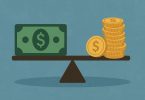Market segmentation is the process of breaking down a target market based on shared criteria like geography, personality traits, interests, behavior, age, needs, and income. These categories can be utilized to improve product development, sales, advertising, and marketing. Brands may use segmentation to design strategies for distinct categories of customers, depending on their valuation of particular products and services. As a result, brands may send a more customized message with the confidence that it will be successfully received.
4 types of market segmentation with examples
Market segmentation is of the 4 following types:
- Behavioral
- Psychographic
- Geographic
- Demographic
Read on to know more about these different types of market segmentation, along with their examples.
Behavioral segmentation
The technique of classifying and categorizing clients based on their behavior is known as behavioral segmentation. These habits include the items and material consumers consume, as well as the frequency with which they connect with a company, its website, and its mobile app. Behavioral segmentation offers four major advantages:
- Predicting future behaviors: Customers’ historical behavioral patterns facilitate accurate predictions regarding customer behaviors in the future, along with the outcomes of those behaviors.
- Personalization: Targeting different customer groups with a variety of offers through the preferred channels of the customers at appropriate times enhances personalization.
- Performance: Monitoring change in segments and growth patterns, in the long run, can help in gauging the health of a business and tracking performance based on the set goals.
- Prioritization: Decisions regarding the allocation of budget, time and resources become smarter when high-value prospects are identified.
Behavioral segmentation can help businesses to understand the use cases, features, and benefits that are applicable to customers. It often involves the use of behavioral analytics tools like WatchThemLive. Some of the other examples of behavioral segmentation include:
- Purchasing behavior
- Usage
- Buyer journey stage
- Customer loyalty
- Timing or occasion
- User status
Psychographic segmentation
When you segment your customers on the basis of their beliefs, thoughts, habits, and perceptions, it is referred to as psychographic segmentation. To draw these psychological traits, businesses observe their customers’ preferences, tastes, and lifestyles to uncover the reasons behind their actions. Through the proper understanding of your customers’ psychological characteristics, you can market your products and/or services on a psychological level. By appealing to their habits and beliefs, your campaigns can result in success. Psychographic segmentation is important because it offers the following benefits:
- Communication: Businesses can communicate with their customers on personal and emotional levels.
- Understanding: You’ll develop a greater sense of understanding into the aspirations, concerns, demands, motivations, and needs of your customers.
- Customization: Businesses can customize their messages and exert a certain degree of control in terms of personalizing messages received by each segment, which is more effective than generic messaging.
Let’s try and understand psychographic segmentation a bit more clearly with an example. If you own a company that produces health bars and find out that there’s a psychographic segment full of people who enjoy outdoor activities, you can promote your product as a recovery food.
Geographic segmentation
Geographic segmentation is the process of dividing your audience into groups depending on where they live or work. This may be done in a variety of ways, including grouping clients by the nation of residence, or smaller divisions, such as region, city, and postal code. The following factors are generally used to create geographic segments:
- Density and type of population (rural, exurban, suburban or urban)
- Language
- Cultural preferences
- Season and climate
- Timezone
- Location (postal code, city, state or country)
Geographic segmentation has the following benefits to offer:
- Greater relevance of products: Geographic segmentation facilitates supplying target audiences with more relevant products based on their needs. As a result, you can expect the relationship between your brand and its customers to improve.
- Easy implementation: Compared to other segmentation types, fewer data points are needed for geographic segmentation. That’s why it’s significantly easier to implement.
- Improved efficacy of advertisements: More targeted advertisements can be curated through geographic segmentation. This translates into your marketing budget being spent on reaching customers who are relevant.
A great example of geographic segmentation is marketing based on time zones, which is something that large businesses do. For instance, aninfluencer marketplace like Ainfluencer can connect brands with influencers’ audiences across different time zones.
Demographic segmentation
Consumers are divided into categories depending on their demographic features, which is known as demographic segmentation. Gender, age, education, income, nationality, religion and other factors are included. Some of the benefits of demographic segmentation include:
- Increased ROI: Through demographic segmentation and tracking existing and prospective customers using a visitor tracking tool, businesses can market their products to target audiences better. As a result, businesses enjoy increased revenues.
- Readily available information: Determining the target demographic through demographic segmentation is based on analyzing census data, which is a simple process. Easily-obtainable consumer reviews and analytics software provide deep market insights as well.
- Customer loyalty and retention: Demographic segmentation allows businesses to focus on the needs and desires of their customers, which leads to enhanced customer loyalty and retention. For example, if your brand is a producer of toys meant for 3- to 5-year-old babies, you can craft your advertisements for the target age group.
Conclusion
More and more businesses nowadays are turning to market segmentation to market their products and services more effectively to their target audiences. In the long run, market segmentation can help your business to gain the upper hand over your competitors in your niche.







